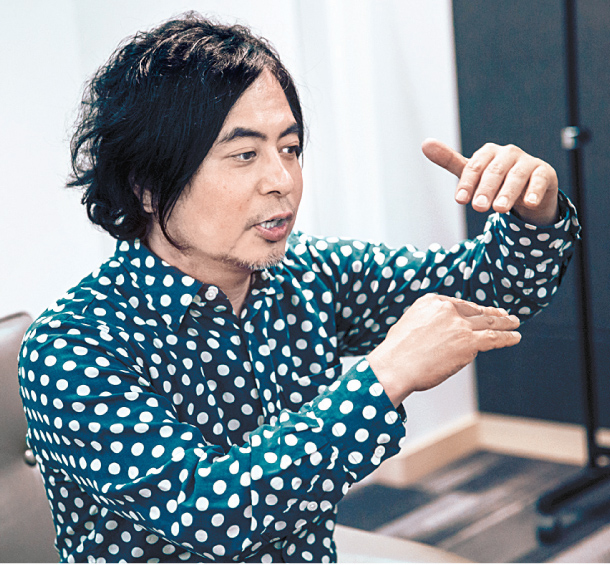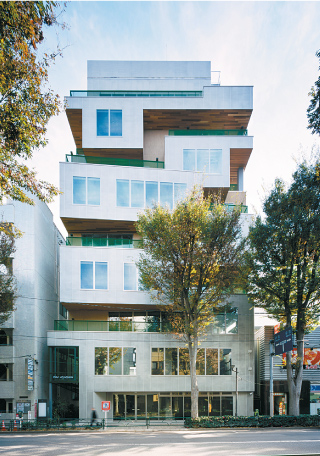Revitalizing old buildings, and Japan’s real estate industry

Hiroya Yoshizato explains his businesses during an interview at Coex, southern Seoul, held last week. [SEOUL LIVING DESIGN FAIR]
In addition to designing new buildings in Japan as part of his job as the creative director at architecture and real estate development firm Speac, Yoshizato oversees a wide range of ventures that include everything from real estate to online retail that sells interior design products.
In 2003, Yoshizato helped launch Real Tokyo Estate, now part of Speac, with the goal of introducing a new way of matching clients to their future homes.
The innovative online service catalogues properties like other listings sites, but focuses on highlighting features that most realtors tend to overlook, like the property’s proximity to a river or the vibe of the neighborhood.

ISM Isagaya, one of the buildings in Tokyo that Yoshizato helped construct with architecture firm Speac. [SPEAC]
“We like to think that we introduced a new social movement through these projects under the theme of ‘innovation,’” Yoshizato told the Korea JoongAng Daily at Coex in Gangnam District, southern Seoul, last Thursday.
He had just wrapped up a seminar titled “Mediating Your Lifestyle” at the Seoul Living Design Fair 2019 to an audience of realtors, land developers and marketers.
The following are edited excerpts from the interview.
Q. What got you interested in the real estate business?
A. I thought that the amount of contact [the] architecture [industry] had with the world was too little. So I wanted to get involved in the planning and operation of a building both before and after its construction.
You work a lot with vacant and secondhand homes. Do you think it’s necessary to preserve all of the empty homes in Japan?
I think the official count of vacant homes in 2015 was around 8.2 million in Japan. It’s been a few years, so I think it is now over 10 million.
I don’t think all vacant homes can be preserved. We should make individual decisions for each home about whether it should be kept or destroyed. We receive a lot of empty home suggestions for Trial Stay, but only around one out of 10 or 20 are adequate.
I don’t think there’s value in keeping buildings that were made just for profit. But we should try to preserve buildings where architects have invested their thoughts and emotions. As an expert, it’s obvious which buildings have been made with a lot of time and effort.
How do your projects promote regional development?
We’ve collaborated at an administrative level with regions like Sotobo, Ichinomiyamachi and Isumi-shi in Chiba Prefecture for projects like Trial Stay [to access vacant homes]. We also do real estate there and opened a share office in Ichinomiyamachi.
Our company recently bought some forested land in Isumi-shi. We haven’t confirmed what we’ll do with it, but we’ll probably build residences. For now, we’ll use the area for a model house and a camping ground.
What kind of a home do you live in?
This is a question that a lot of my colleagues receive, but we’re actually more normal than you think.
My concept of an ideal home has changed since I started Real Tokyo Estate, after I got married and became a father.
The home I live in now is right beside a river lined with cherry blossoms, which should be in full bloom when I return. The neighborhood is one of the best in western Tokyo.
BY KIM EUN-JIN [kim.eunjin1@joongang.co.kr]










with the Korea JoongAng Daily
To write comments, please log in to one of the accounts.
Standards Board Policy (0/250자)